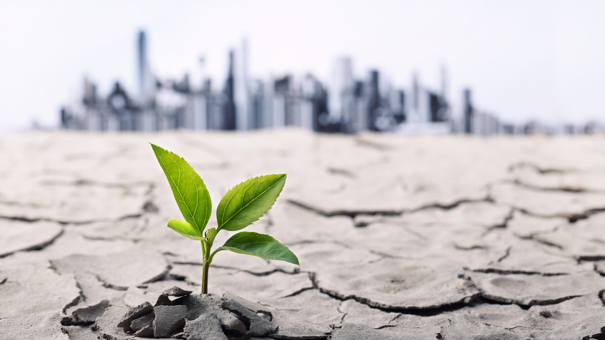
As our planet steadily warms and the climate changes, one thing is for certain — it is incredibly hard to predict what the long-term future holds.
There is a ton of data that shows Earth’s climate is warming, but the change is occurring so rapidly that the existing data doesn’t necessarily provide scientists with a way to make 100 percent accurate predictions.
Plus, we can hardly get weather predictions right for the next week, so imagine trying to make accurate predictions for decades into the future.All of that said, there are six predictions that we can generally make regarding the future of our planet and our money.
1. Water will cost more
Water is, hands down, our most precious resource on this planet. Scientists predict that potable water may become increasingly rare in the next 50 years — at least, based on our current climate models and methods for collecting and storing water. At least half the world’s population relies on groundwater for personal consumption (with urban demand expected to grow by 55 percent by 2050, according to National Geographic), and groundwater is supplied by precipitation.
Global warming is expected to increase downpours, so one might expect that our groundwater supply should be in good shape. However, that’s not the case. Groundwater builds up slowly over time, through melting snowpack and steady precipitation. If climate forecast models are accurate, then it’s possible that the next 100 years will see northern hemisphere snowfall amounts decline dramatically (between 10 percent and 30 percent, according to National Geographic).
Increased precipitation, when it comes in the form of monsoon-like deluges that are too voluminous to be absorbed, simply causes flooding.In addition, warmer global temperatures will contribute to problems with water quality, according to both the Union of Concerned Scientists and Physicians for Social Responsibility. Rising seawater in low-lying coastal areas can contaminate freshwater reserves. In areas of drought, on the other hand, concentrations of freshwater contaminants are expected to increase, which can lead to potential health concerns for humans.
Precipitation deluges can also cost municipalities millions if excess stormwater floods damage sewage treatment plants (as happened in Seattle in February 2017). This can lead to a costly backup — or in the case of the Seattle treatment plant, millions of gallons of raw sewage pouring into Puget Sound. All of this makes it extremely likely that the cost of potable water will get much higher in the next 50 years or so.
2. Energy will cost more
North America has enjoyed a boom in cheap oil and natural gas in recent years, thanks to fracking, a means of extracting oil and gas from rock shale using pressurized water. But as climate change causes freshwater supplies to dwindle and water costs to rise, expect to see either a falloff in fracking-related production of fossil fuels or a drop in demand.
Other means of power generation may come under threat, too. Many of the country’s rivers may actually see less water flow due to shifting precipitation patterns and accelerated evaporation rates. Less water flowing in our rivers will mean less water to power hydroelectric dams. Did you know that water is used to cool coal and nuclear power plants, too? Without access to that water, power brownouts are a possibility in many areas, especially during times of peak power usage.
Fortunately, advancements in green technologies like solar and…
The post 6 Ways Climate Change Could Affect Your Money appeared first on FeedBox.